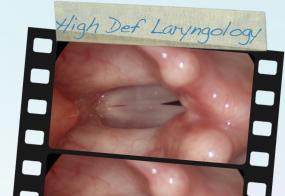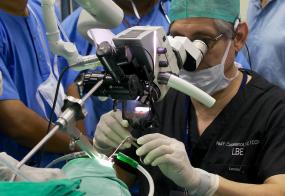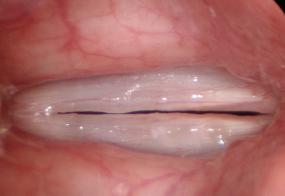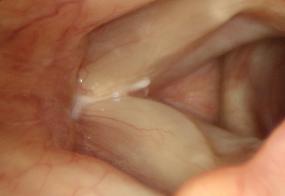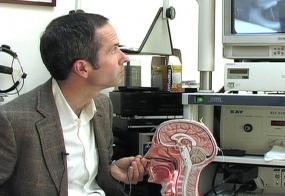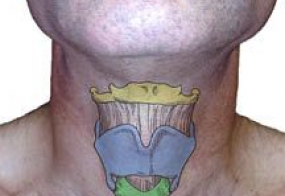Blog
Vocal capabilities pattern matching is a group of voice elicitations for evaluation and documentation of phonatory ability and impairments of the human voice (hoarseness). Pitch and volume are varied while the examiner records the voice and notes when sound (the voice) is clear (harmonic) and at what pitch/volume combinations, clear voice is impaired. Secondly, the examiner notes how it is impaired – that is, which tasks generate breathiness, which generate roughness and which generate both qualities. Third, for further precision, the tones on which impairment occurs are noted.
We just wrapped up the excellent 3rd meeting of the Combined European OtoRhinoLaryngological Society (CEORL) in the city of Prague, Czech Republic. CEORL 2015
My presentation at the 3rd CEORL conference in Prague, Czech Republicon 8 June 2015. It details my thoughts on how the combination of high technology and low technology, when merged, lead to a high definition examination of the larynx.
Attending “AOICON 10th South Zone & 32nd Karnataka State Annual Conference 2014” in Bangalore, October 10-12, 2014 as faculty, the meeting is fascinating for many interesting ideas. In particular, the internal approach to repositioning of the arytenoid by Paul Castellanos opened my eyes to a new method of laryngeal framework surgery. Paul’s idea for altering the larynx consists of entering the vocal cord by a microlaryngeal incision through the aryepiglottic fold - false cord junction. Cutting cleanly with a programmable CO2 laser, a pocket is created and the arytenoid can be maneuvered.
There is a practical course on functional diagnosis of voice disorders coming up in Barcelona, Spain - Voice Course Barcelona. The speakers are a great group of presenters! Ferran Ferran Vilà, ENT and phonosurgeon. Barcelona (Course director) Cori Casanova, Phoniatrician. Barcelona (Course director) Bruno Coulombeau, Phoniatrician. Lyon Romain Perouse, ENT and phonosurgeon. Lyon Markus Hess, ENT, phonosurgeon and phoniatrician. Hamburg Nieto, P. Phoniatrician. Valencia Dalmau, J. ENT and phonosurgeon. Valencia Botey, Q. Psychologist and voice therapist.
Abstract A voice laboratory is an expensive proposition when the most current equipment options are purchased; consequently, a voice examination can be an expensive proposition. An examiner may have the latest equipment and high technology offers the ability to see larynx anatomy and function in finer detail than in the past. However, even if one does not have the highest technology available, knowing what can be seen with the best equipment helps to understand and interpret the findings when using low technology.
Sounds like a great neurolaryngology conference put on by the Neurolaryngolgy Study Group, coming up at the American Laryngological Association Meeting on Wednesday May 14 at 5 pm by Jean-Paul Marie on laryngeal reinnervation surgery. The topic: "Ten years experience in selective bilateral reinnervation of the larynx." It will be at Ceasar's Palace, in room Roman I/III, the same room as the ALA meeting at COSM that afternoon.
This is an abstract I have submitted for the Fall Voice Conference in San Antonio, Texas.
During an examination, people hate to be embarrassed--they naturally and fairly immediately try to compensate for any hoarseness. It is fortunate that there is redundancy in the vocal system so compensation is usually available to maintain sound production even when there is a problem. However, for the examiner, compensation tends to hide a voice disorder, both audibly as well as visually. Some common instances hidden by compensation include mucosal disorders on the edge of the vocal cord or weakness from neurologic and muscular disorders.
Sipping espresso in Ken’s Boulangerie & Cafe, I hear the background noise of the espresso grinder mingling with the murmur of voices. The couple next to me are chatting in Japanese, drinking coffee and downing a pastry. I don’t understand a word, but I can hear that each person’s voice box, or more technically the larynx, is functioning well.



